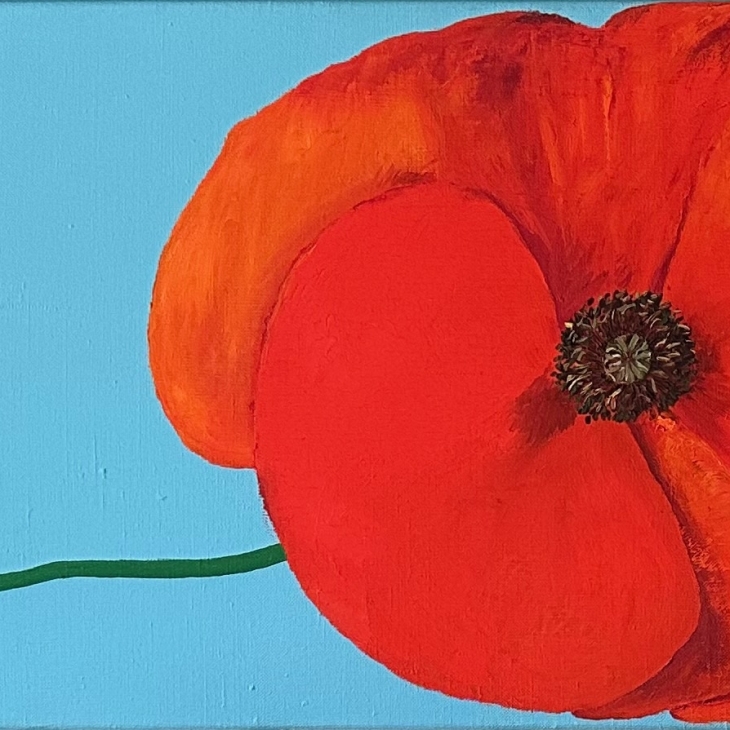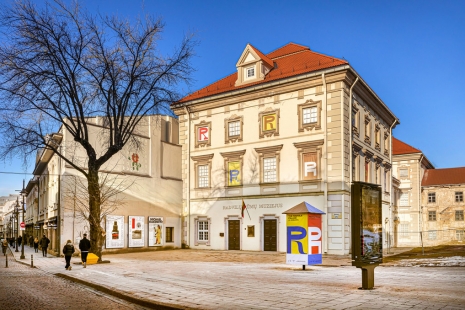(2) items in your cart

Price: €2300

A retrospective put together by the American conceptual artists Igor and Svetlana Kopystiansky specifically for the museum space includes the artwork created by each of the them individually prior to the emigration to the West where their collaborative stage gained impetus. The event features still photography, works on paper, canvas, objects and video.

The artwork by Ukrainian- and Russian-born Svetlana and Igor Kopystiansky has been featured by the international biennials and museum events of consequence and is part of the collections by the leading museums. Several pieces by the artists are showcased at the Radvila Palace Museum of Art as well, as part of the Protest Art: The Rebels of the Soviet Era, the only permanent exhibition of non-conformist Soviet-period art currently on display at the art institutions across Northern and Central Europe.
From Lviv to New York
In the 1970s through 1990s, Ukrainian-born Igor (1954) and Russian-born Svetlana (1950) Kopystiansky were active contributors to the non-official art field, thus resisting the regulations of the Soviet system. The artists exhibited in their own studio and held underground exhibitions in Lviv, showing conceptual paintings and graphic prints, objects, installation, they also took part in the activity of non-conformist art groups.
In 1988 which brought about first opportunities of freer movement, the Kopystiansky emigrated to the West. They lived and worked from New York, later on, later on, from Paris and Berlin. In the 1990,s they started created video art. The couple’s creative output the West is primarily associated with their video work.
The artists have given exhibitions at the museums and galleries worldwide, they have been part of the major international exhibitions and biennials. The Kopystiansky archive is kept at the Pompidou Centre in Paris. Their artwork has been acquired by the MoMA, the Metropolitan and the Whitney American Art Museum in New York City, the Tate Museum in London, the Berlin Gallery, MUMOK in Vienna, New South Wales Art Gallery in Sidney and other leading institutions of modern and contemporary art. The artists’ activity is presented by a number of catalogues and international art publications.
New visual experiences from appropriated images
Already since 2020, visitors to the Radvila Palace Museum of Art in Vilnius are able to familiarize with the artwork by Svetlana and Igor Kopystiansky, at a permanent exhibition Protest Art: The Rebels of the Soviet Era featuring the Vladimir Tarasov’s gifted-to-the-museum collection, installed in renovated premises. The collection includes works on paper by Svetlana Kopystiansky and the impressive paintings by the artists: the hand-written Landscape (1980) by Svetlana Kopystiansky and Painting-Object (1985) by Igor Kopystiansky.
The current retrospective by the creative duo extends this presentation and familiarizes with the artwork by the Kopystiansky, highlighting the individual – and shared – strands of their art.
‘Their juvenillia were anchored to modern avantgarde ideas (especially by dada and its pioneer Marcel Duchamp), they used the appropriation method on a large scale, ‘borrowing’ and conceptually adapting images and texts already in circulation. The individually created pieces on display reflect this powerful influence, which with time evolved into aesthetic and conceptual experiments in the media of the moving image’, relates director of the Radvila Palace Museum of Art, Justina Augustytė.
The exhibition includes videos Drawing a White Line (1979), Double Fiction (2008), Pink and White (2006), and A Cup of Coffee (2019), presented for the first time in Lithuania. Reusing television and film materials (by Alfred Hitchcock, Ingmar Bergman, Jean-Luc Godard and other directors) the artists create unexpected, intense and new cinematographic experiences.
The exhibition at the Radvila Palace Museum of Art will be enhanced by a publication on the art by the Kopystiansky. Events, meetings and educational programme will expand the context of the exhibit.
The exhibition will run through 29 February 2024.
Exhibition organized by the Radvila Palace Museum of Art of the LNMA
Project financed by the Lithuanian Council for Culture
Supported by AAS BTA Baltic Insurance Company
Exhibition architect Jurgis Dagelis
Coordinating architect Aleksandras Kavaliauskas
Designer Loreta Uzdraitė
Exhibition coordinators Justina Augustytė and Lina Jonkuvienė
Galerii nimi: The Radvila Palace Museum of Art
Address: Vilniaus gatvė 24, Vilnius, Lithuania
Opening hours: Tue-Sat 11:00 - 18:00 Sun 12:00 - 17:00
Open: 16.11.2023 — 29.02.2024
Types of art: Mixed media
Address: Vilniaus gatvė 24, Vilnius, Lithuania
Opening hours: Tue-Sat 11:00 - 18:00 Sun 12:00 - 17:00
Open: 16.11.2023 — 29.02.2024
